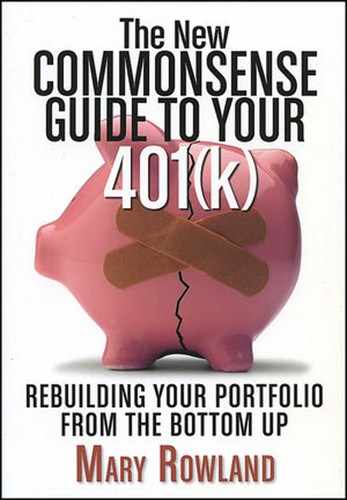THERE WAS A TIME WHEN U.S. stocks represented two-thirds of the value of all the stocks trading in the world. By the end of the twentieth century, though, the numbers flip-flopped, and two-thirds of the value of all stocks was to be found outside the United States, so experts argued that the best way to diversify and cut risk while increasing return was to invest 30 to 40 percent of a U.S. stock portfolio overseas; that way, one investment will zig as the other zags. Many Americans began to invest in foreign stocks both to diversify their holdings and to create potential for portfolio.
But can you pick foreign stocks? How about stocks in India or Australia? I certainly can't. Nor can most portfolio managers. This is where exchange-traded funds (ETF) come in handy. These funds, which are just now being introduced in 401(k) plans, allow investors to pick a particular sector of the economy or a specific geographical region or both.
You can buy an index of foreign stocks just as you buy an index of U.S. stocks. One way to compare investment returns is to look at the Standard & Poor's Index of 500 Stocks (the ETF is SPY) and the EAFE or Europe, Australasia and Far East Index, as a proxy for stocks in developed countries other than the United States. (The iShares MSCI EAFE index is EFA.) Many different ETFs are available that provide indexes for emerging markets such as Egypt, India, Israel, Chile, and South Africa.
The iShares ETFs, managed by Barclays Global Investors, N.A., based on the MSCI indexes, are the leading player in this market, followed by State Street Global Advisors. But Vanguard Group, the birthing company of the retail index fund, has been moving aggressively into index ETFs. And other players, such as Wisdom Tree, have also entered the market.
Today, you can take an investing slice based on energy or technology or health care, for example, and invest it around the globe with a global technology fund like iShares S&P Global Technology Sector Index Fund (IXN).
During the market crash in 2008, geographical diversification did not do international investors much good when markets around the world collapsed at the same time. Indeed, international markets, and even the emerging markets in developing countries, do not provide the cushion against U.S. market downdrafts as they once did. Consider the group of G-20 countries that met at the end of September 2009. The leaders of these 20 nations talked about making economic advances as a team, which would further blunt an effort to diversify a portfolio by investing abroad.
There is another reason for—and another risk involved in—using international funds and that is currency risk. When you invest in foreign funds, your U.S. dollars are converted to the currency of the fund you choose. When you sell the fund, you must convert your investment back to U.S. dollars. This currency translation gives you a gain on that part of your investment if the currency you invest in has gained against the dollar and vice versa.
In the autumn of 2009, the U.S. dollar was falling against other currencies. Some experts say that the long-term outlook for the dollar is not good because of the huge debt the U.S. government is running up.
And, the Wall Street Journal reported on September 27, 2009,[10] that, on the heels of one of the worst years in stock-market history, some experts are recommending emerging markets because the developed countries are too debt ridden to grow. The MSCI Emerging Market index was up 60 percent year to date, while the Dow Jones Industrial Average posted a gain of only 10 percent, the Journal reported.
If foreign stock funds seem too risky, one alternative is to invest in non-dollar sovereign bonds issued by the central bank of a foreign country. Another possibility is an ETF that invests in bonds issued by the central banks of several foreign countries. One such fund (WIP) invests in inflation protected bonds of countries excluding the U.S.
Yet another option is to invest in a foreign currency through an exchange-traded fund such as FXF (CurrencyShares Swiss Franc Trust), which invests in Swiss franc-denominated bank deposits.
[10] Wall Street Journal, online.wsj.com, http://online.wsj.com/article/SB125399713181243611.html?mod=WSJ_hpp_MIDDLENexttoWhatsNewsThird.
